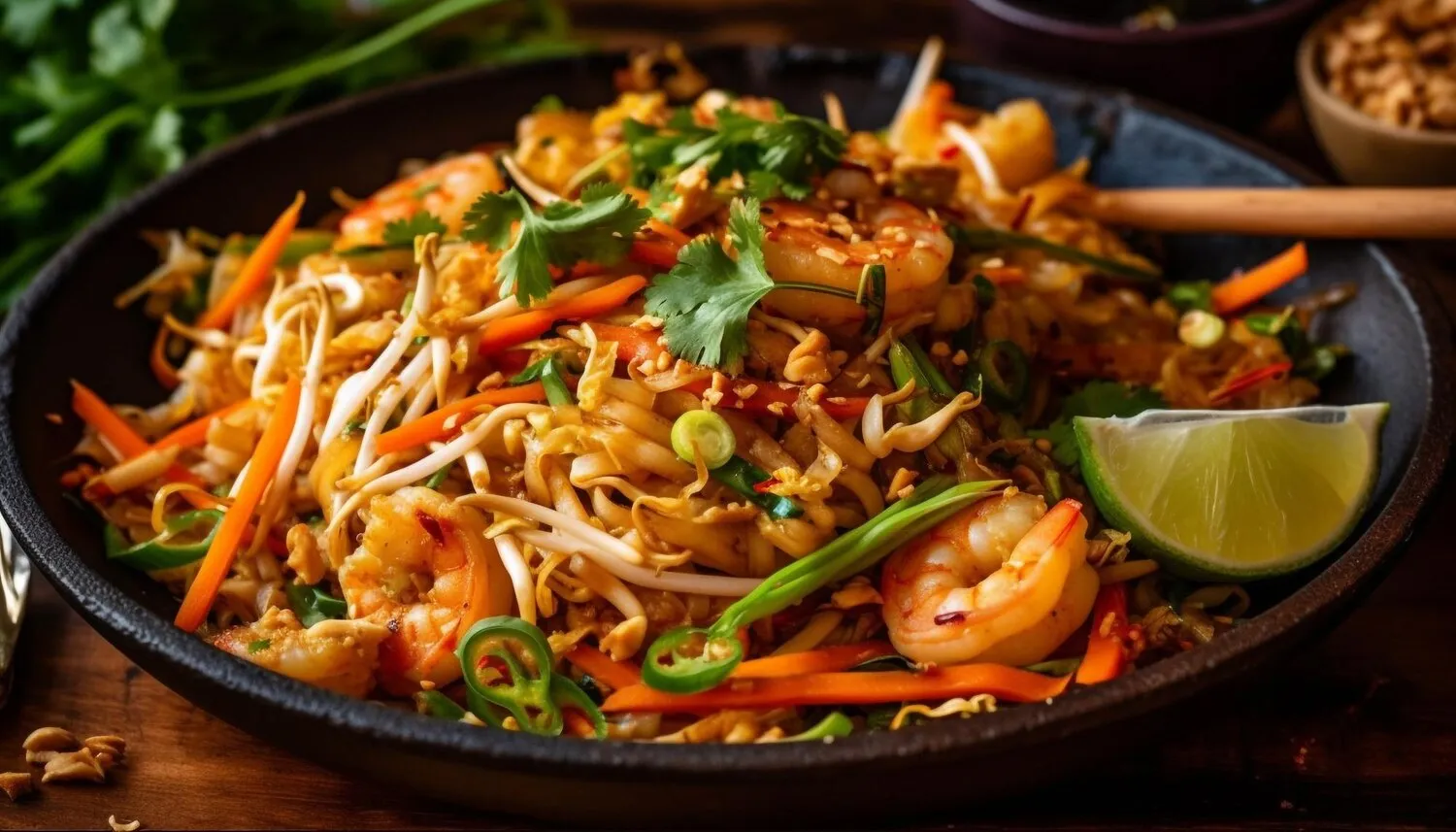
Yakisoba de Carne
Stir-fried noodles with beef and vegetables.
Nutrition Facts
* The % Daily Value (DV) tells you how much a nutrient in a serving of food contributes to a daily diet. 2,000 calories a day is used for general nutrition advice.
Banzai Sushi
Yakisoba, meaning 'fried noodles,' emerged in Japan after World War II, influenced by Chinese chow mein. As resources became available, different regional variations evolved, often incorporating locally sourced ingredients and flavor profiles. Yakisoba de Carne specifically showcases the adaptation to beef preferences.
Yakisoba is a popular and accessible dish enjoyed across Japan. It's often found at street food stalls, festivals (matsuri), casual restaurants, and in home kitchens, representing a quick, affordable, and satisfying meal.
Street Food Staple
Yakisoba is a common sight at Japanese festivals and street food stalls, often served in a paper tray and eaten with chopsticks. It's a convenient and satisfying meal for on-the-go enjoyment.
Home Cooking Favorite
Yakisoba is easy to prepare at home using readily available ingredients. Pre-packaged yakisoba noodles and sauce are commonly sold in supermarkets, making it a convenient weeknight meal.
Regional Variations
While Yakisoba de Carne is a specific variation, the dish itself has many regional adaptations. Some regions use different types of noodles or sauces, while others incorporate unique local ingredients like seafood or specific vegetables.
Yakisoba de Carne is characterized by a savory, umami-rich flavor profile with a slightly sweet and tangy undertone. The beef adds richness, while the vegetables provide freshness and subtle sweetness.
The primary flavor components come from the yakisoba sauce, typically a blend of Worcestershire sauce, soy sauce, oyster sauce, ketchup, and sugar. The beef contributes a savory richness. Stir-frying the ingredients over high heat creates Maillard reaction, giving the dish a deep, complex flavor. Ginger and garlic often add a pungent aromatic dimension. The choice of vegetables further influences the flavor profile, with cabbage providing a mild sweetness, onions adding a sharp bite, and carrots contributing a subtle sweetness.
High Heat is Key
Stir-frying over high heat is essential for achieving the characteristic wok hei flavor, a slightly smoky and charred taste. This helps to cook the noodles quickly and prevent them from becoming soggy.
Prevent Sticking
To prevent the noodles from sticking to the pan, ensure the pan is properly heated before adding oil and that the noodles are slightly separated before adding them to the pan. Adding a bit of water or sake during cooking can also help.
Sauce Balance
The sauce is the heart of yakisoba. Adjust the proportions of Worcestershire sauce, soy sauce, oyster sauce, ketchup, and sugar to suit your taste. Experiment with adding a touch of ginger, garlic, or sesame oil for added complexity.
Explore additional Noodles dishes and restaurants
Explore NoodlesDiscover top dining spots and culinary experiences in Ananindeua.
Explore AnanindeuaLearn more about the food culture, restaurant scene, and culinary heritage of Brazil.
Explore Brazil